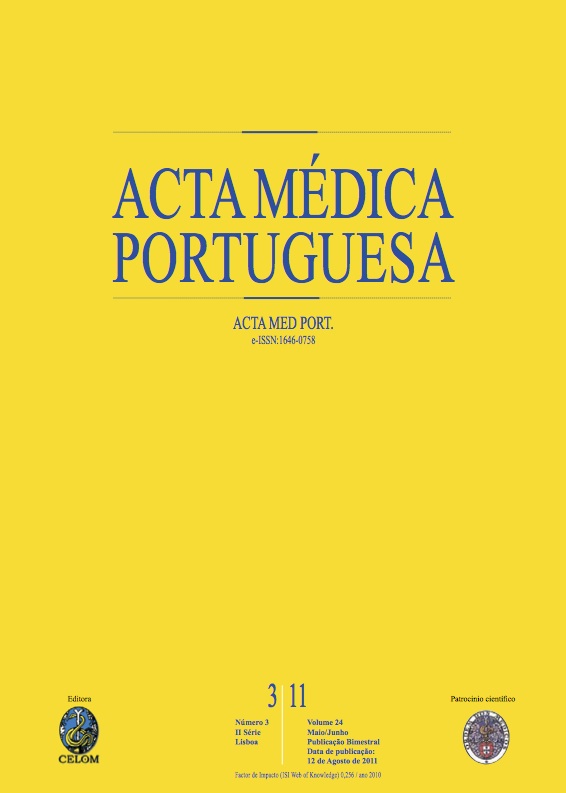Osteomielite por serratia e doença granulomatosa crónica.
DOI:
https://doi.org/10.20344/amp.459Resumo
Chronic Granulomatous Disease (CGD) is a primary immunodeficiency disorder characterized by recurrent purulent infections of the skin, lungs, and reticuloendothelial organs, primarily due to staphylococci, enteric bacteria, fungi, and occasionally mycobacteria. More than two thirds of all cases are X-linked and result from defects in the CYBB gene that encodes the gp91-phox subunit of NADPH oxidase. The authors present a case of a three month old child admitted with a metacarpic steomyelitis by Serratia marcescens. Studies confirmed an abnormal respiratory burst in activated neutrophils and absence of gp91-phox expression on patient and a brother (with previous Nocardia infection). Both hemizygous for a pathogenic mutation detected in exon 3 of CYBB gene (c.252 G>A, p.Ala84Ala), a variant that affects the splicing. At two years of age he is still on prophylaxis with cotrimoxazol and itraconazol, without relevant complications. CGD is rare but must be evocated in cases of uncommon or atypical infections.Downloads
Downloads
Como Citar
Edição
Secção
Licença
Todos os artigos publicados na AMP são de acesso aberto e cumprem os requisitos das agências de financiamento ou instituições académicas. Relativamente à utilização por terceiros a AMP rege-se pelos termos da licença Creative Commons ‘Atribuição – Uso Não-Comercial – (CC-BY-NC)’.
É da responsabilidade do autor obter permissão para reproduzir figuras, tabelas, etc., de outras publicações. Após a aceitação de um artigo, os autores serão convidados a preencher uma “Declaração de Responsabilidade Autoral e Partilha de Direitos de Autor “(http://www.actamedicaportuguesa.com/info/AMP-NormasPublicacao.pdf) e a “Declaração de Potenciais Conflitos de Interesse” (http://www.icmje.org/conflicts-of-interest) do ICMJE. Será enviado um e-mail ao autor correspondente, confirmando a receção do manuscrito.
Após a publicação, os autores ficam autorizados a disponibilizar os seus artigos em repositórios das suas instituições de origem, desde que mencionem sempre onde foram publicados e de acordo com a licença Creative Commons









